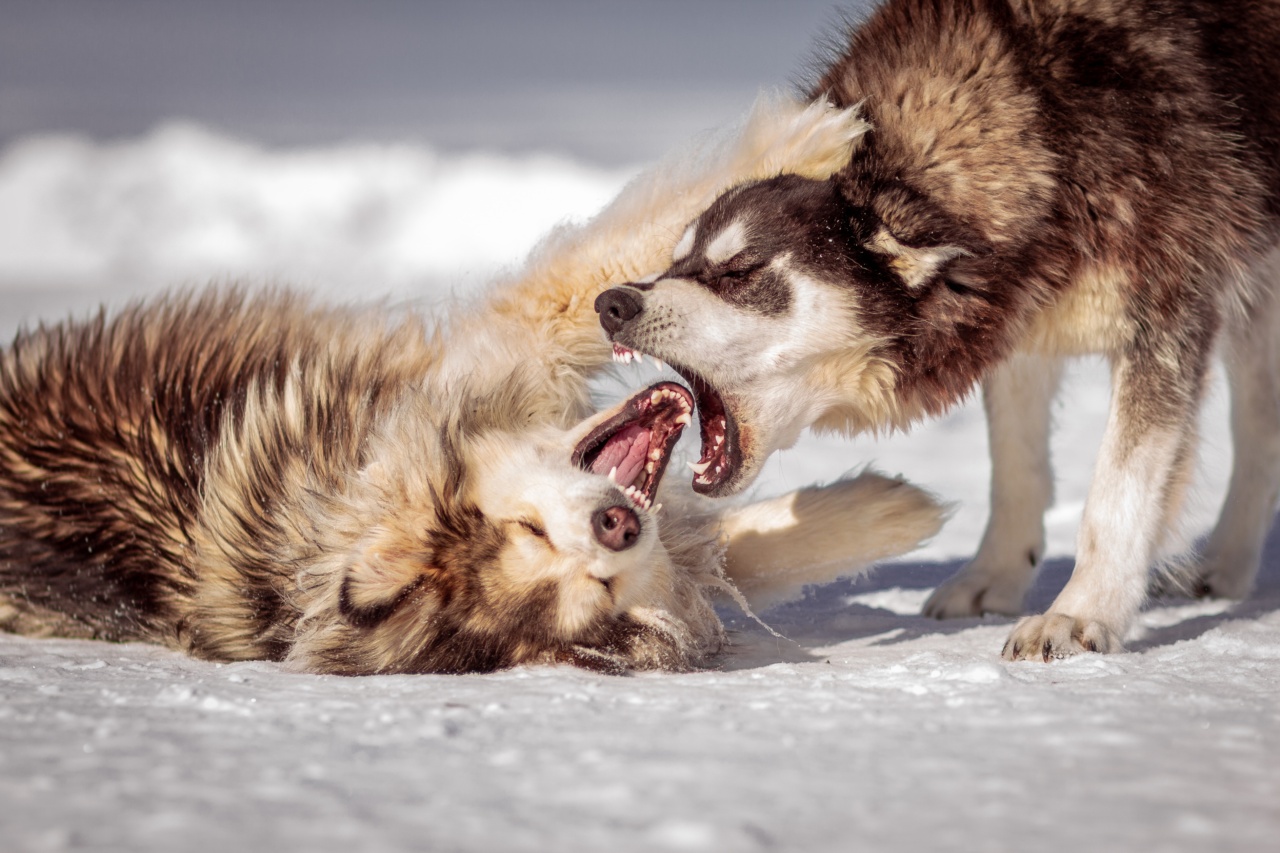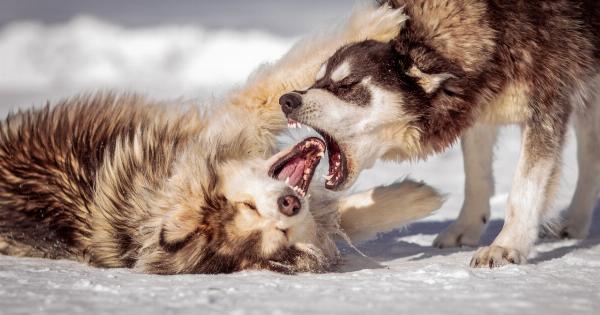Having an aggressive dog can be a challenging experience for any pet owner. It is not uncommon for dogs to exhibit aggressive behavior, but it can cause a lot of stress and anxiety for both the dog and its human companions.
In this article, we will explore the reasons why a dog may become aggressive and what you can do about it.
Why do dogs become aggressive?
Dogs can become aggressive for a number of reasons, including:.
- Fear
- Territorial behavior
- Protecting their resources
- Defense of their pack or family members
- Pain or illness
- Changes in their environment
- From poor training and/or socialization
It is important to identify the cause of your dog’s aggression so that you can work on a plan to address the behavior and get the appropriate help from a veterinarian, dog trainer, or behaviorist.
Types of aggression in dogs
Not all aggressive behavior in dogs is the same. There are several types of aggression that your dog may exhibit:.
Fear aggression
This type of aggression occurs when a dog feels threatened or frightened. It is often seen in dogs that have not been socialized properly or have had bad experiences with people or other dogs.
When a fearful dog is confronted with a situation that they find scary, they may become aggressive in an attempt to protect themselves.
Territorial aggression
Dogs are protective of their homes and their families, and territorial aggression can occur when they perceive a threat to these things. This type of aggression is often seen in guard dogs or breeds that have been bred for protection.
The dog may become aggressive when someone enters their territory or approaches their family members or belongings.
Resource guarding
Dogs may become aggressive when they feel that their resources, such as food, toys, or beds are in danger of being taken away. This behavior can be a result of poor training or neglect and can trigger the dog to protect what they have.
Social aggression
This type of aggression occurs when a dog is trying to establish their position in the pack. Dogs are social animals and have a hierarchical structure. Social aggression can occur when one dog is challenging the other’s status in the pack.
It is often seen in households with multiple dogs, and it is essential to work with a dog behaviorist to identify the source of the aggression and establish a peaceful hierarchy.
Predatory aggression
Predatory aggression occurs when a dog’s instinct to hunt prey is triggered. This type of aggression can be triggered by movements, such as running or jumping, or by the presence of smaller animals like cats or rabbits.
Predatory aggression is often seen in hunting breeds or dogs that have been bred for their hunting instincts.
Treatments for canine aggression
There are several ways to address aggressive behavior in dogs. The first step is to identify the cause of the aggression and work on a behavioral modification plan with a professional dog trainer or behaviorist.
In some cases, medications may also be prescribed by a veterinarian to help manage the dog’s aggressive behavior.
Behavioral modification typically involves counter-conditioning and desensitization techniques, where the dog is exposed to stimuli that trigger their aggressive behavior and gradually learns to have a different response.
Positive reinforcement training, where the dog is rewarded for good behavior, is also an effective way to treat aggression in dogs.
It is important to note that some types of aggression, such as predatory aggression, may not be fully treatable, and the best course of action may be to manage the behavior and avoid situations that trigger the dog’s aggression.
Preventing aggression in dogs
Preventing aggression in dogs is often easier than treating it after it has already developed. The most important thing you can do to prevent aggression in your dog is to provide proper training and socialization from a young age.
Training your dog to obey basic commands and socializing them in different environments and with different people and animals can help prevent the development of aggressive behavior.
Additionally, it is important to create a positive and enriching environment for your dog. Providing them with plenty of exercise, toys, and mental stimulation can help reduce boredom and stress, which can lead to aggressive behavior.
Conclusion
Dealing with an aggressive dog can be a stressful and overwhelming experience. However, with the right professional guidance and a willingness to work on a behavioral modification plan, it is possible to help your dog overcome their aggressive behavior.
Early prevention through proper training and socialization is key to avoiding aggressive behavior in the first place.
























